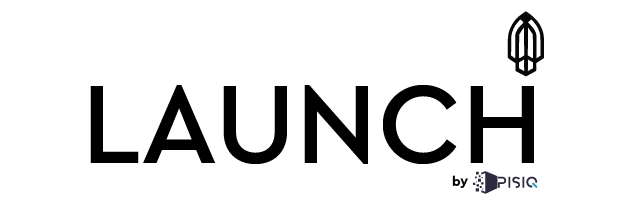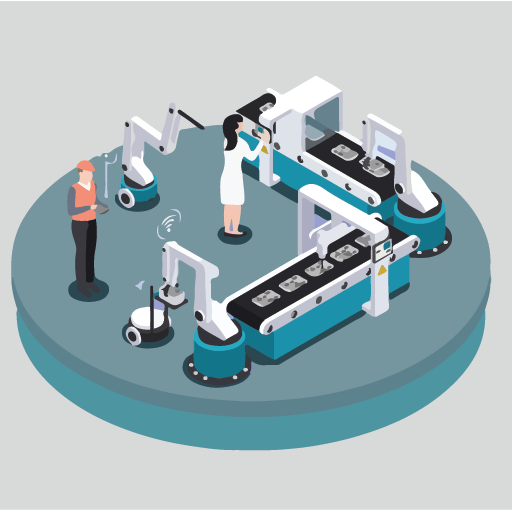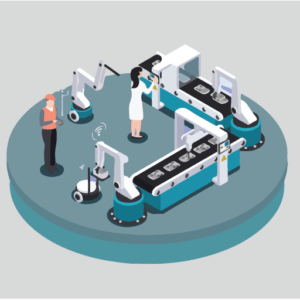Industrial Internet of Things (IIoT)
As we know, the world is becoming increasingly integrated with AI Technology (Artificial Intelligence) and more advanced intelligent technologies are coming out, these all are generally connected to the Internet or rely on it in more than one way to access the real world of physical devices, systems (biometrics), appliances and technology (Robotics) . It can be said that all this is enabled by deep learning which finds its roots in the basic concepts in a vision for intelligent systems using AI.
The Industrial Internet of Things (IIoT), also known as the Industrial Internet, enables organisations, consumers and governments to connect to various different types of IoT devices, including remotes, dashboards, networks, gateways, analytics, artificial intelligence, automation, data storage, and security, machine learning. All of these components and recent innovation in technology and various industries, make up the Industrial Internet of Things ecosystem.
An example of massive Industries savings thanks to using intelligent PISIQ IIoT technology.
[table id=4 /]
Industrial Internet of Things vs Internet of Things (IIoT vs IoT)
An easy way to grasp the difference is to understand the Industrial Internet as effectively and intelligently connecting machinery and devices in industries such as the electrical power generation sector, Oil, Gas and Fuel, Logistics and Healthcare where there is a higher risk for where system failures and downtime can result in high-risk life threatening situations, however, the Internet of Things may also tend to include simple consumer-level devices such as heart monitoring bands or smart home appliances. They are functional, useful and can provide conveniences but do not create emergency situations if downtime were to occur.
A good example is how the Industrial Internet of Things envisions machines that tell operators and users how to optimize productivity or detect a failure before it occurs, potentially saving companies billions of dollars a year, while the Internet of Things includes connected refrigerators that can purchase more milk and eggs online before they run out, smart water systems and thermostats, all of which is also a demonstration of effective AI and machine learning where utilised.
When it comes to the power of IIoT, there is no limit. As larger amounts of data are created from increasingly connected machines, systems, and devices, the volume of critical and valuable insights to be realized and acted upon is limitless.
Depth of the Industrial Internet of Things
- The Internet of Things is generally becoming more increasingly popular in certain industrial environments and is increasingly used alongside Artificial Intelligence for a wide variety of applications in sectors like industrial factories, automotive vehicle plants, pharmaceutical medicinal plants, consumer electronics and high-tech energy plants as well as in oil, gas refineries and the food/beverage supply chains.
- Enterprises and Organisations would gain by placing certain people at the center of their digitization programs and strategies and then further implementing machine learning / artificial intelligence IIoT interfaces across the entire organisational/business hierarchy. The main benefits of the technology are then readily available to many employees and have a positive effect on the implementation and organisation of projects.
- Industrial companies under worldwide global pressure are turning towards more integrated, and available prefabricated IIoT solutions with greater technological breadth and partner ecosystems to move fast. In many cases, the ready-made IIoT solutions lead to a decent shortening of the provision delivery times to a few months or weeks.
- Production is an industry in which a majority of IIoT technology is currently being implemented. Industrial-Internet-of-Things-enabled machine learning automation can generally self-monitor and also predict potential problems, meaning less downtime (more productivity) and greater overall efficiency.
-
With sensor-managed inventory, IIoT technology could take care of ordering supplies just before they go out of stock, This would ultimately decrease the overall amount of waste produced while and during keeping necessary goods in the stock inventory, and it also frees up employees to focus on other tasks.
- IIoT technology could make building management certainly simpler and far more secure than conventional methods. With more advanced sensor-driven climate control (AI Technology (Artificial intelligence) the majority of guesswork and inevitable frustration involved in having to manually change a building’s climate will be ultimately eliminated. Furthermore, smart machine learning devices can be placed that proceed to monitor all entry points in the building and respond to any potential threats swiftly, thus it will increase the building’s security.
- Presently, Advances in IIoT technology has allowed the creation of devices that monitors it’s patients remotely and notify local healthcare providers as soon as patients’ statuses change for the better or worse, IIoT can also cause healthcare to become more accurate, more powerful and responsive. Eventually over time, AI Technology (Artificial intelligence) may even be able to take over patients’ diagnoses, meaning doctors are able to treat them sooner and more effectively.
- In Retail, Industrial Internet of Things based technology has good and strong potential to make quick, intelligent marketing strategy decisions for any individual stores and businesses. With multiple storefronts that will automatically update based on the consumer interest and the AI ability to put together smart, consumer oriented promotions, certain retail outlets that implement IIoT technology could gain a significant advantage over their competitors.
Industrial Internet of Things in the present
The barriers to entry in regards to adopting IIoT technology has overall fallen quite dramatically in the past decade or two, it’s apparent that the historical challenges to implementing IIoT solutions had indeed included certain expensive components for the sake of adding network connectivity, the noticeable difficulty of aggregating data from various disparate data streams, and general lack of a centralized database or dashboard.
Now that these barriers are mostly gone, thanks to the 21st Century’s improvements in technology, and an overall focus from software providers towards creating platform solutions for reading and writing data, and since the Internet of Things is a generally data-rich category, larger and larger amounts of data get collected, aggregated, classified, identified and shared in a meaningful and useful way.
With the ultimate goal being to increase Artificial Intelligence integration and automation level at several domestic and commercial levels, this raw and quantum data is vital as well and pushes for a change in the human tasks in an Industry whereby certain forms of automation may lead to a decrease of specific types of workloads, for the Industrial Internet of Things, moving forward is not solely about fully replacing human work, its goal is to enhance and optimize it completely by, for example, creating brand new revenue streams and effective business models with a big role for data overall.
PISIQ’s Deployment of Industrial Internet Of Things optimisation for clientele in organisational, business and government facilities in Dubai, UAE was the first not solely in the Middle East but in the world for the usage of intelligent AI based ecosystems.
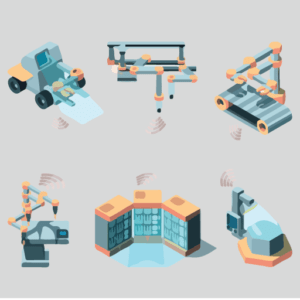
The Industrial Internet of Things takes the best benefits of the Internet of Things in to a much higher level to the industries with high-stakes that need it the most, where even the slightest of human error may possibly result in massive risks or losses. The precision, accuracy and efficiency levels that are able to be achieved through IIoT in tandem with Artificial Intelligence is one of the greatest advantages and benefits.
Advantages of Industrial Internet of Things
Based on what we read from above, we can conclude the follow regarding several key advantages of the Industrial Internet of Things:
Error Reduction & Machine Learning
The Industrial Internet of Things ultimately empowers it’s users, and manufacturers to properly digitize nearly every part of their business, from inventories to operations, thus by reducing the overall manual process and human entries, manufacturers and clientele are able to reduce the biggest risk associated with manual labor, which is human error. thanks to PISIQ’s Artificial Intelligence technology.
This also goes way beyond just operational and manufacturing errors. effective IIoT solutions also can reduce the risk of any cyber and database breaches caused by the risk and presence of human error. Intelligent AI and smart machine learning enabled programs and machinery can do so much of the required computing themselves, in turn properly eliminating the potential for someone to make any mistakes, and put the organisational/industrial data at risk.
Increased efficiency levels
One of the biggest benefits of Industrial Internet of Things is that it gives the opportunity to manufacturers to ability to automate their operations and everything digital, and therefore truly optimize their operating efficiency, Robotics and automated machinery can work more efficiently and accurately, boosting productivity tenfold and assisting manufacturers in streamlining their functions.
Furthermore, Advances in Artificial Intelligence allows physical machinery to be connected to software and intelligent hardware via smart sensors that monitor performance on a constant basis. This enables the manufacturers to have much better insights into operational efficiency and productivity, for example, a certain confidential factory located in the United Arab Emirates, producing Aluminium for further refinement and distribution, has maximised their production and efficiency standards by upto 87% after the integration of PISIQ IIoT AI for operations management, thus it is an important asset that shows the power and usability of intelligent IIoT.
We can conclude that IIoT-enabled data systems empower manufacturers to improve operating efficiencies by:
- Bypass certain manual tasks and functions and integrating automated, smarter, digital ones.
- Monitoring performance from anywhere on earth, on the manufacturing floor, Headquarters or from thousands of kilometers away
- Making intelligent data-driven decisions regarding all manufacturing and operations functions.
Artificial Intelligence for Maintenance Prediction
Nothing would negatively impact a manufacturing operation any more than machine downtime. What could possibly be causing such drastic issues that manufacturers cannot operate or manage? The answer is straightforward, lack of proper and smart AI predictive maintenance.
When maintenance in the manufacturing world is more reactive rather than on the proactive side of things, manufacturers are still stuck trying to identify what their issues are, how they can be repaired, and what it would cost them to. With better and intelligent predictive maintenance powered by Artificial Intelligence based industrial IoT solutions, all of those issues are alleviated and solved.
When advanced machinery performance and it’s AI function is monitored consistently, manufacturers can create a baseline standard . This baseline and the corresponding quantum data empowers and encourages companies with the information to see any issue before it occurs. They can then proceed to schedule maintenance prior to downtime, which benefits them greatly in that they:
- Know the cost of the project operations prior to the plan, and can budget accordingly for it.
- Have the required parts and machinery for the job.
- Move production to other vacant areas of the facility, so that the product quotas are unaffected
- Ensure that the following machinery is operating at maximum efficiency and thus full productivity.
Improved Safety Regulations
All of the quantum data and intelligent sensors required of the fully functioning IIoT manufacturing operations facility are also geared towards helping to bolster workplace safety, “Smart manufacturing” is turning into “smart security” when all of the Industrial Internet of Things sensors work together to monitor workplace and employee safety.
Integrated and Intelligent safety systems are at the forefront for protecting workers on the floor, on the line, and in distribution area, should any accident occur, everyone in the facility would be alerted and informed, operations can cease until it’s safe to continue, and company leadership can intervene and make sure the accident and incident is resolved. incidents like these can also generate valuable quantum data and knowledge (Machine Learning) that can help prevent a repeat occurrence in the future.
Industrial Internet of Things Cost Savings:
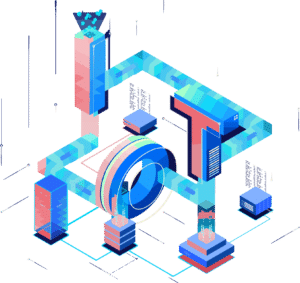
With the expansion of various sectors in the Industrial field of Internet of Things, the necessity for system, machine and technology maintenance is crucial, every year millions of dollars are spent on this exact issue, Maintenance is a liability that it’s companies have, and these companies hire extra to cover the aforementioned maintenance, so system checkups, machine breakdowns, software updates and spare parts need to be effectively managed, thus more employees are necessary, increasing the general costs of hiring, employer count and downtime, they aren’t often working when there isn’t an issue, so it’s wasted hours and time.
Before PISIQ IIoT Implementation
[table id=2 /]
PISIQ’s IIoT AI can easily simplify this issue, for any setbacks or breakdowns, intelligent Artificial Intelligence Technology activates and enables repairs, maintenance and system management only when necessary, saving vital time, lowering hiring costs and lowering the overall risk, smart Machine Learning also assists in predictive maintenance, being able to deduce patterns and understand information from past issues, PISIQ’s Industrial Internet of Things can accurately predict when maintenance is required and seamlessly solve major failures or breakdowns.
When the average maintenance technician works for $21,000 USD a month, some companies hire a minimum of 15 to 100 technicians, and upwards of 100 to 1000 technicians, this is huge cost for the sake of machine maintenance, PISIQ’s IIoT is cheaper and more reliable.
After PISIQ IIoT Implementation
[table id=3 /]
Is implementing IIOT worth it?
From the data above we can tell that the cost of implementing the IIOT system would be covered by the industry in a matter of a few months leaving the company with higher profit margins as well as a more sustainable environment with machines being able to last longer than they would without the constant tracking.
[sc_fs_multi_faq headline-0=”h2″ question-0=”What is IIOT?” answer-0=”It is the abbreviation of Industrial Internet of Things.” image-0=”” headline-1=”h2″ question-1=”What is Industrial Internet of Things?” answer-1=”The Industrial Internet of Things (IIoT), also known as the Industrial Internet, enables organisations, consumers and governments to connect to various different types of IoT devices, including remotes, dashboards, networks, gateways, analytics, artificial intelligence, automation, data storage, and security, machine learning, all of these components and recent innovation in technology and various industries, make up the Industrial Internet of Things ecosystem.” image-1=”” headline-2=”h2″ question-2=”Is Internet of Things Artificial Intelligence?” answer-2=”There is a clear intersection between the Internet of Things (IoT) and Artificial Intelligence (AI).
IoT
IoT is about connecting machines and making use of the data generated from those machines. AI is about simulating intelligent behaviour in machines of all kinds.” image-2=”” headline-3=”h2″ question-3=”Is Internet of Things the same as Industrial Internet of Things?” answer-3=”Industrial Internet of Things is a branch of Internet of Things that is designed to cater to industries. ” image-3=”” headline-4=”h2″ question-4=”Is it worth it to implement an IIOT system?” answer-4=”From the data in the table we can tell that the cost of implementing the IIOT system would be covered by the industry in a matter of a few months leaving the company with higher profit margins as well as a more sustainable environment with machines being able to last longer than they would without the constant tracking. There are savings of around $600,000 for an average industry after implementing IIOT” image-4=”” count=”5″ html=”true” css_class=””]
